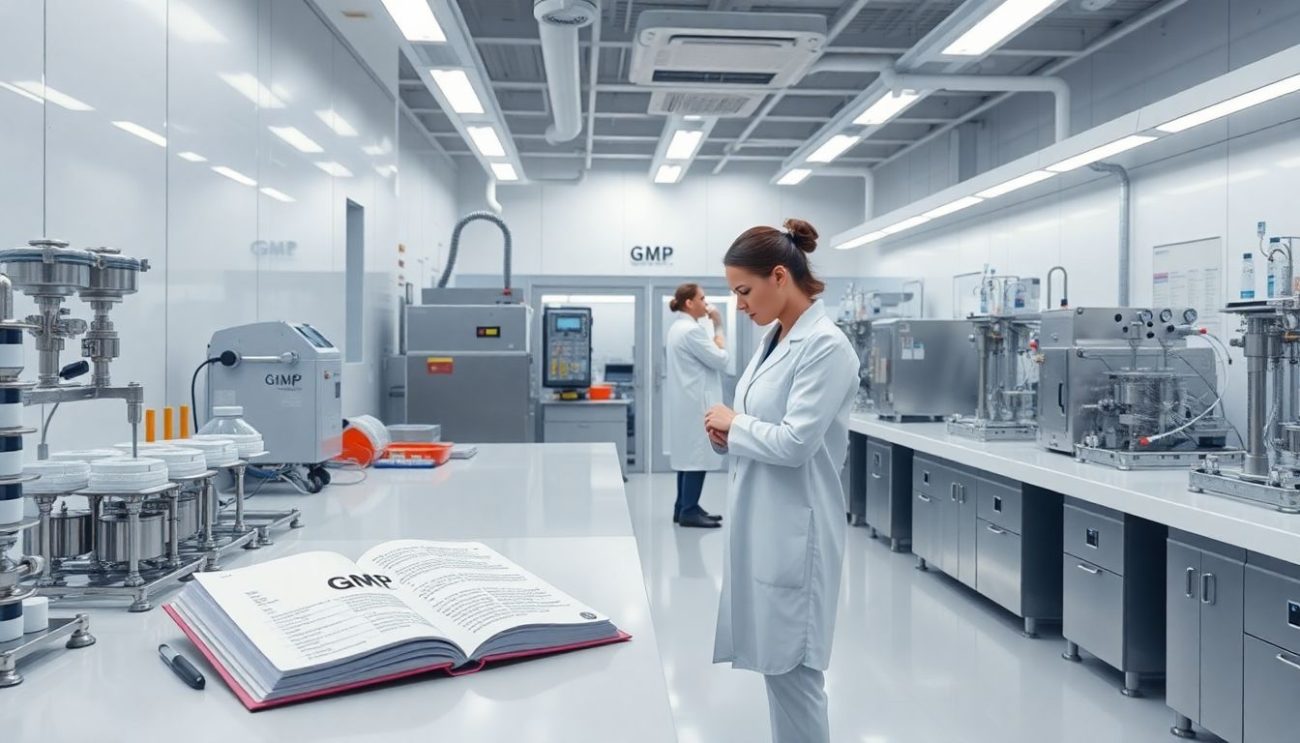List of 10 Golden Rules of GMP : Imagine a medicine recall because of contamination. Lives are at risk, and trust vanishes. Good Manufacturing Practice (GMP) prevents this. GMP is a system ensuring drugs are safe and effective. It’s crucial for patient safety and builds confidence. These 10 golden rules of GMP are essential. Follow them to guarantee quality and compliance.
Importance of 10 Golden Rules of GMP in Pharmaceuticals
Good Manufacturing Practice (GMP) is a critical regulatory framework that ensures the quality, safety, and efficacy of pharmaceutical products. The 10 Golden Rules of GMP serve as fundamental principles to guide pharmaceutical personnel in maintaining compliance with regulatory standards and producing high-quality medicines. Their importance is outlined below:
1. Get the Facility Design Right from the Start
A well-designed facility prevents contamination, cross-contamination, and mix-ups in pharmaceutical production. It ensures smooth workflow and adherence to hygiene and safety standards.
Reference: WHO GMP Guidelines (WHO Technical Report Series, No. 986)
2. Validate Processes – Prove It Works
Process validation confirms that manufacturing processes consistently produce products meeting quality requirements. This ensures reliability and compliance with regulatory expectations.
Reference: US FDA Guidance for Industry – Process Validation (2011)
3. Write Good Procedures and Follow Them
Standard Operating Procedures (SOPs) provide clear instructions to maintain consistency and minimize human errors in production and quality control.
Reference: EU GMP Annex 15 – Qualification and Validation
4. Identify Who Does What
Clearly defined roles and responsibilities enhance accountability and reduce errors in pharmaceutical operations.
Reference: ICH Q10 – Pharmaceutical Quality System
5. Keep Good Records
Accurate documentation ensures traceability, compliance, and audit readiness. It helps in root cause analysis during deviations or recalls.
Reference: WHO GMP Guidelines (WHO Technical Report Series, No. 996)
6. Train and Develop Staff
Regular GMP training ensures that personnel remain competent and up-to-date with evolving regulations and best practices.
Reference: US FDA CFR Title 21 Part 211 – Current Good Manufacturing Practice for Finished Pharmaceuticals
7. Practice Good Hygiene
Personnel hygiene prevents contamination risks that can compromise drug quality and patient safety.
Reference: WHO GMP Guidelines (Annex 1 – Manufacture of Sterile Medicinal Products)
8. Maintain Equipment
Regular maintenance and calibration of equipment prevent failures and ensure consistent product quality.
Reference: EU GMP Chapter 3 – Equipment Design and Maintenance
9. Protect Products from Contamination
Proper environmental controls, including air filtration and cleanroom protocols, minimize the risk of microbial and particulate contamination.
Reference: US FDA Guidance on Sterile Drug Products Produced by Aseptic Processing (2004)
10. Build Quality into the Whole Product Lifecycle
Implementing Quality by Design (QbD) principles ensures quality is embedded at every stage, from development to distribution.
Reference: ICH Q8 – Pharmaceutical Development
